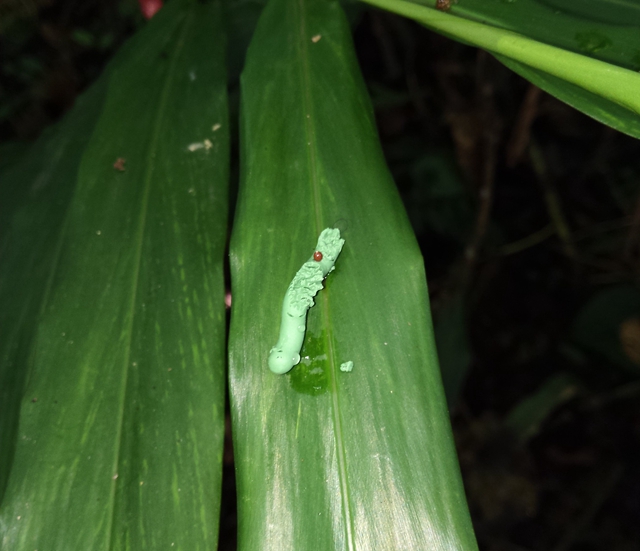Some studies in temperate forests and agroecosystems have supported the ’enemies hypothesis’ that predators exert more effective top–down control of herbivorous insects with increasing plant diversity. However, it remains understudied in tropical forests.
Students and teachers at the Program for Field Studies in Tropical Asia,Xishuangbanna Tropical Botanical Garden (XTBG) used artificial caterpillars to investigate to what extent species richness, composition and structural features of forest fragments (i.e. patch size, edge distance and canopy openness) contribute to explaining observed predation rates. Plant community effects were tested with respect to three vegetation strata: trees, saplings and herbs.
The predation experiments were conducted in 16 plots selected from a set of previously established permanent forest fragment plots in Menglun, Xishuangbanna. At each survey plot, the researchers established three 4 m x 5 m grids where 20 artificial caterpillars (made using a mixture of green and apple green color modeling clay) were set on plant leaves 1 m apart from each other.
The researchers also conducted behavioral experiments to test whether ants, the major predator of the sampling sites, show preference towards (or against) plasticine models compared with real caterpillars.
They found that predation was mainly driven by ants. Predation rates showed a similar positive relation to species richness for tree and herb strata. Among the vegetation strata, they found that predation was most strongly associated with herbs, suggesting that major predators may utilize the ground and understory stratum. Predation rates were also significantly correlated with sapling and herb densities and herb species composition. Decreased sapling density and increased herb cover predicted higher predation rates. This suggests that, besides species richness, turnover of plant species, particularly that of understory plants, is strongly associated with changes in predation rate.
The study entitled “Does plant diversity increase top–down control of herbivorous insects in tropical forest” has been published online in OIKOS.
Contact
Bruno Leles
Program for Field Studies in Tropical Asia,
Xishuangbanna Tropical Botanical Garden, Chinese Academy of Sciences, Menglun,
Mengla, Yunnan, PR China.
E-mail: brunopleles@gmail.com

Artificial caterpillar was preyed by insects on leaves (Image by Bruno Leles)

